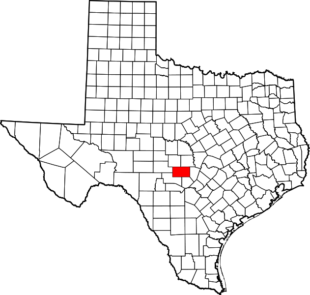Stonewall High
The Stonewall High (High) is the term the District has given to the area in eastern Gillespie County that occupies the Stonewall area on the south and the Cave Creek area to the north. It extends to the east in to Blanco County towards Hye. It extends to the west, and plunges to the southwest and dies out near Blumenthal. The term High defines the geologic structure beneath this area that is identified as a horst. A horst is defined as a block of the earth’s crust that has been uplifted along faults relative to the rocks on either side.
The two accompanying maps illustrates the location of the Stonewall High. Map one is an aerial of the area and shows the various stratigraphic units comprising the High and the adjacent units on either side of the High. Most of the contacts between the units are fault controlled, however there are normal sedimentary contacts present. The aerial map is provided to help in locating areas of interest.
Map two is identical to the first, with the exception that the stratigraphic units are color coded. These units comprising the High are Cambrian-age (≈ 500 Ma to 483 Ma) from the Moore Hollow Group, with the San Saba being the youngest and the Hickory the oldest. Most of these Cambrian-age subcrop beneath younger Cretaceous-age Hensel and Glen Rose sediments.
The area north, south, and west of the High are down thrown fault blocks comprising mainly of the younger Ordovician-age Ellenburger Group (≈ 477 Ma to 483 Ma). The exception to this is the area to the northwest where Pennsylvanian- age (≈ 320 Ma to 322 Ma) Marble Falls is adjacent to the High.
The complex faulting present on the High, and throughout the other Paleozoic rocks that are adjacent to the Llano Uplift, is the result of the Ouachita orogeny that occurred at the end of the Pennsylvanian Period (≈ 300 MA). This occurred when two tectonic plates collided to form the super continent Pangea. Uplift occurred and was generally responsible for the Stonewall High. This was followed by an extensive period of erosion until the Cretaceous (≈ 140 MA) seas transgressed over these older Paleozoic-age rocks, depositing Cretaceous-age sediments. As mentioned above, Cretaceous-age Hensel and Glen Rose units presently cover most of the Paleozoic Cambrian-age rocks that subcrop beneath the Cretaceous rock, and comprise the Stonewall High, although some Paleozoic-age rocks are exposed at some locations throughout the High.
The cross sections A-A’, B-B’, C-C’ and D-D’ provided on this website, transect the Stonewall High and illustrates its geologic complexity along with its relationship to the adjacent down thrown areas.
Groundwater availability from the Cambrian-age rocks comprising the High is sporadic at best. The San Saba and Welge are the usual aquifers found there, however yields from these units are generally low (< 15 gpm). The Hickory is present but is usually at great depths and when encountered does not provide significant yields. The other Cambrian-age units are not considered to be aquifers, however some produce varying amounts of groundwater, provided the fracturing is present. The Cap Mountain is an example, where in some areas it is capable of producing large yields (> 100 gpm).
The Stonewall High is a very complex geologic feature whose understanding is limited, however that will improve as more data is obtained in the future. These current interpretations are based on Geologic Quadrangle maps as prepared by the Bureau of Economic Geology, water well drillers logs, and geophysical logs. As more data is obtained, interpretations will, in all likelihood, change.


